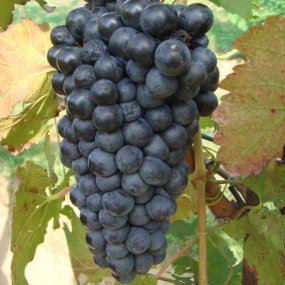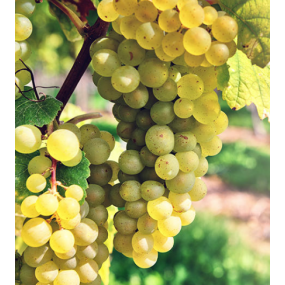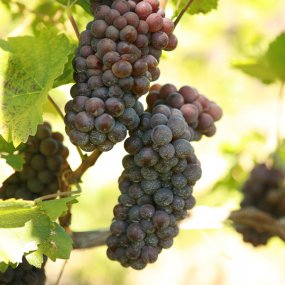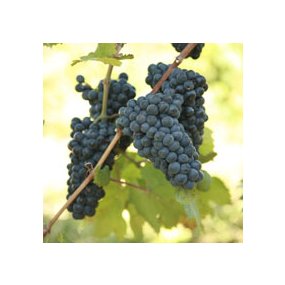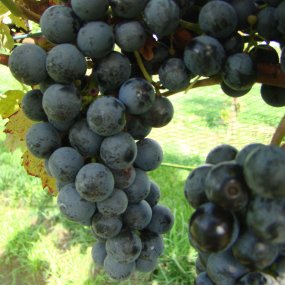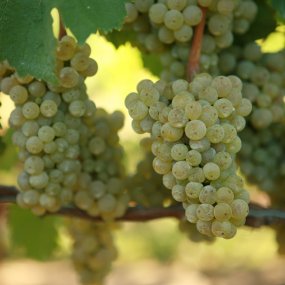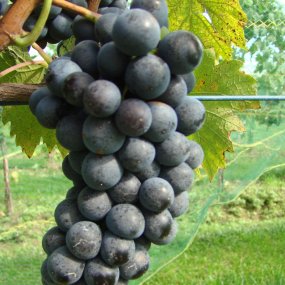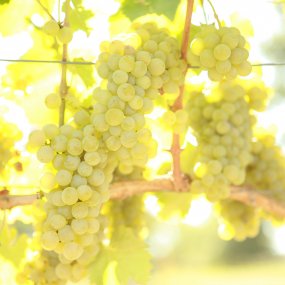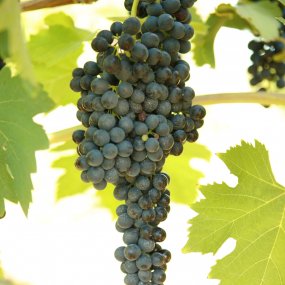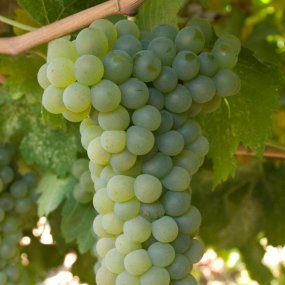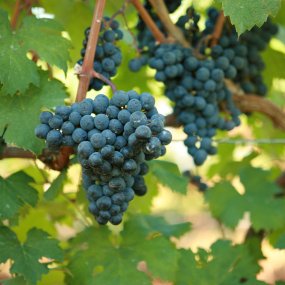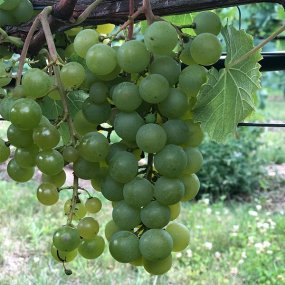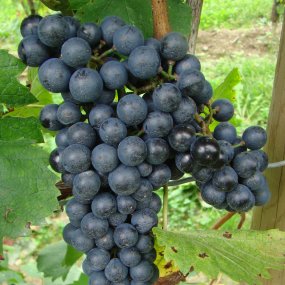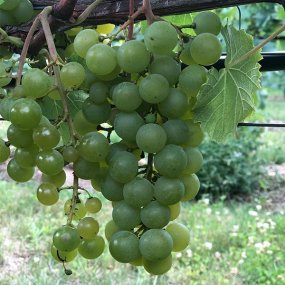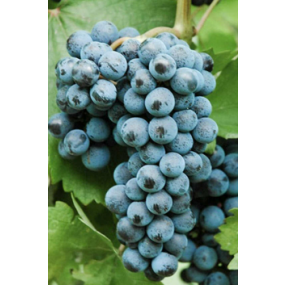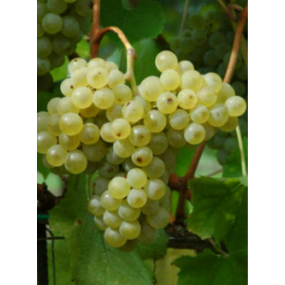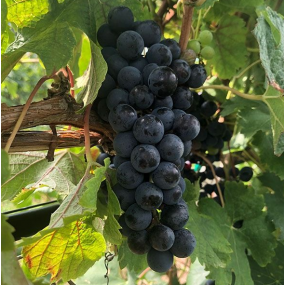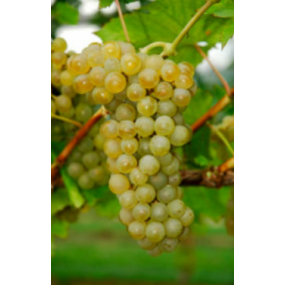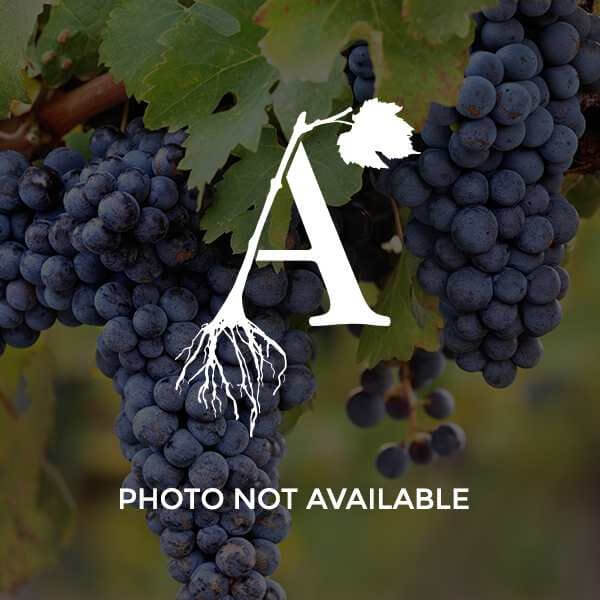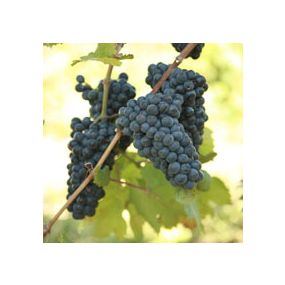Certified Availability 2020
The varieties within this section have been certified to 2010 Protocol, FPS, CPCNW or other certified standards. . Look for the certification designation in parentheses following the clone information to ensure you are getting the level of certification you desire. You will be charged a premium for certified vines. For further information on 2010 Protocol please read the available description in the FAQ section.
Petite Sirah - Grafted
Petite Sirah (also known as Durif) became popular in France for its resistance to downy mildew but have since fallen from favor there. Today, Petite Sirah grape vines are being planted experimentally in many locations ...
Pinot Blanc - Grafted
Likely discovered in Burgundy in the late 19th century as a sport of Pinot Gris (itself a sport of Pinot Noir), Pinot Blanc is widely planted in central Europe. Sometimes confused with Chardonnay but often known for its ...
Pinot Gris - Grafted
Pinot Gris is a lighter-skinned mutation of Pinot Noir that produces small, compact clusters of berries ranging in color from pink, to coppery-gray, to brownish-pink, even within the same cluster. Its low acidity makes t...
Pinot Noir - Grafted
Pinot Noir is the classic red Burgundy cultivar, it ripens best under cool, dry conditions and is best suited for cool but moderate climates. Wines are lower in tannins and pigments than the other great French wine varie...
Regent - Grafted
Regent is a relatively new German hybrid, mostly vinifera, with good fungal disease resistance. Regent wines can have intense color, high tannins, moderate acidity, and show aromas of cherry and black currant.
Riesling - Grafted
Riesling, the noble grape of Germany, is renowned for its versatility in producing white wines. This hardy vinifera variety excels in cooler climates Though highly susceptible to diseases like black rot, downy mildew, po...
Sangiovese - Grafted
Sangiovese is the most planted grape variety in Italy, the principal variety for fine red wine in Tuscany, and the base wine for the production of Chianti. It is a late-ripening red that produces wines with pronounced t...
Sauvignon Blanc - Grafted
Sauvignon Blanc is responsible for some of the world's most distinctive dry white wines with a wide range of aromatics. It produces a wide range of wine styles from dry aromatic wines to desert wines in France, to ripe f...
Shiraz - Grafted
Shiraz, the Australian synonym for Syrah, is an ancient and noble variety known for producing exceptional wines with long aging potential. Depending on the climate and soil, Shiraz wine grapes yield a wide range of flavo...
Tannat - Grafted
Tannat grape is an important variety in Uruguay, known for producing deeply colored, astringent wines. These wines are often blended with other varieties like Cabernet Franc and Cabernet Sauvignon to enhance their comple...
Tempranillo - Grafted
Tempranillo is Spain’s signature red grape, known for early ripening and full-bodied, earthy wines. Tempranillo grape vines are suited for USDA zones 6-9, they perform well in warm, dry climates. Great for varietal win...
Viognier - Grafted
Viognier is a Rhone variety that produces small clusters of yellow and amber fruit. Viognier can make excellent wines with distinctive aromatic characteristics, but vines tend to have low vigor and produce relatively sm...
Cabernet Franc - Grafted
A component of many Bordeaux blends, Cabernet Franc matures earlier than Cabernet Sauvignon and is more suitable for cooler climates. One of the more winter hardy vinifera varieties, it is becoming more popular in easte...
Chardonnay - Grafted
The standard of white wine grapes, Chardonnay can be used to make a wide range of wine styles from "fruit forward" wines fermented in stainless, to buttery wines fermented or finished with oak. Chardonnay is the primary ...
Blanc du Bois - Grafted
Blanc du Bois is a Pierce's disease tolerant cultivar with very good wine quality potential. Grown successfully where temperatures do not drop below +10F (USDA hardiness zone 8). Grown in coastal areas in the southeast U...
Lemberger - Grafted
Not to be confused with cheese, Lemberger is used to produce low acid, varietal wines. It is gaining a reputation in the Finger Lakes region of NY as a variety with good wine potential and easier to grow than Pinot Noir....
Blanc du Bois
Blanc du Bois is a Pierce's disease tolerant cultivar with very good wine quality potential. Grown successfully where temperatures do not drop below +10F (USDA hardiness zone 8). Grown in coastal areas in the southeast U...
Black Spanish
Black Spanish is an older variety that is tolerant to Pierce’s disease (it can carry the disease and thus be a source of infection if insect vectors are present with no reduction in yield, but Black Spanish vines sold ...
Cabernet Volos- Grafted
Cabernet Volos (Cabernet Sauvignon x 20-3) is one in a line up of mildew resistant VCR varieties that reduce the spray requirements while producing quality fruit and wine. With a similar flavor profile to its parent- Cab...
Fleurtai - Grafted
Fleurtai (Tocai Friulano x 20-3) is one of two of the mildew resistant VCR varieties that has shown 'excellent' resistance to both Downy and Powdery Mildew. Fleurai's golden-green colored berries produce a delightful, wh...
Merlot Kanthus - Grafted
One of two red, wine varieties out of the mildew resistant VCR line up, Merlot Kanthus (Merlot x 20-3) maintains excellent wine quality resembling that of it's parent. Vines are adaptable to different trellis systems due...
Sauvignon Kretos - Grafted
Sauvignon Kretos (Sauvignon x 20-3) is one of two Sauvignon crosses in a line up of mildew resistant VCR varieties that reduce the spray requirements while producing quality fruit and wine. The golden hues of Sauvignon K...
Soreli - Grafted
Soreli (Tocai Friulano x 20-3) joins mildew resistant variety, Fleurtai of the VCR varieties with excellent resistance to both Downy and Powdery mildew. While Soreli can hold it's own in a bottle, Soreli and Fleurtai hav...
Sauvignon Rytos - Grafted
Sauvignon Rytos (Sauvignon x 20-3) is one of two Sauvignon crosses in a line up of mildew resistant VCR varieties that reduce the spray requirements while producing quality fruit and wine. Sauvignon Rytos makes an intens...
Out of Stock
Villard Noir - Grafted
Introducing Villard Noir, the esteemed grapevine variety synonymous with crafting exceptional wines. Renowned for its rich, dark fruit flavors and robust tannins, Villard Noir grapes are the connoisseur's choice for prod...
$13.75
As low as
$5.25
Out of stock
View Details

